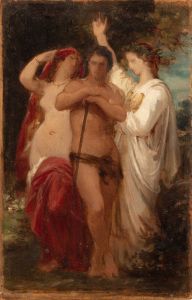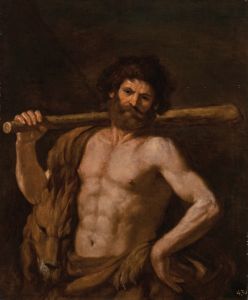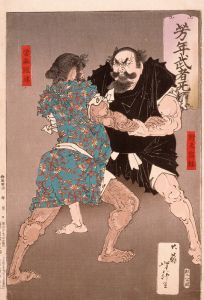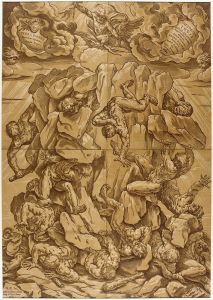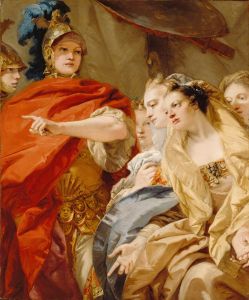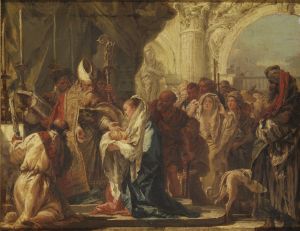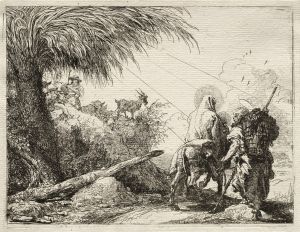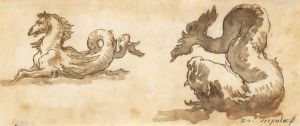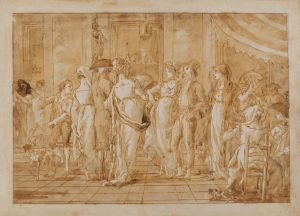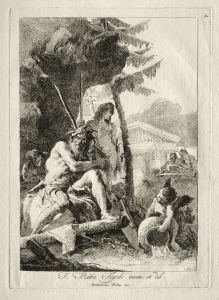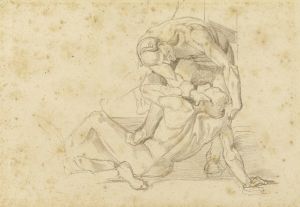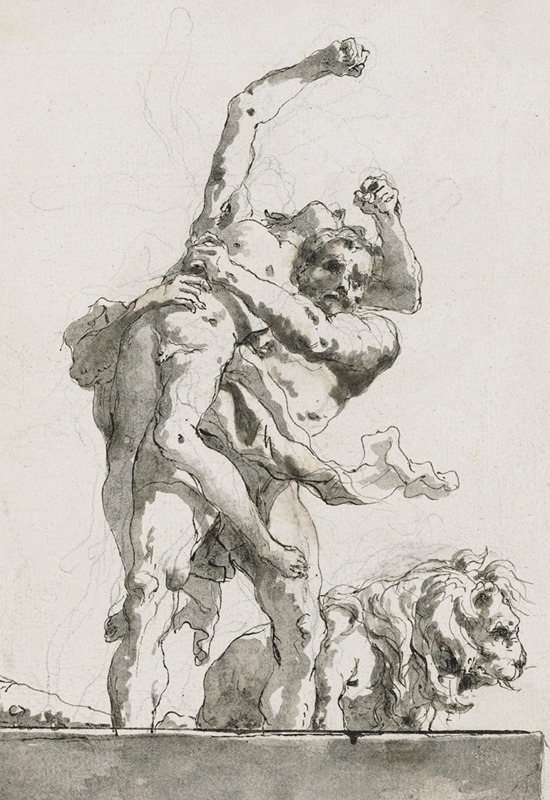
Hercules and Antaeus
A hand-painted replica of Giovanni Domenico Tiepolo’s masterpiece Hercules and Antaeus, meticulously crafted by professional artists to capture the true essence of the original. Each piece is created with museum-quality canvas and rare mineral pigments, carefully painted by experienced artists with delicate brushstrokes and rich, layered colors to perfectly recreate the texture of the original artwork. Unlike machine-printed reproductions, this hand-painted version brings the painting to life, infused with the artist’s emotions and skill in every stroke. Whether for personal collection or home decoration, it instantly elevates the artistic atmosphere of any space.
Giovanni Domenico Tiepolo, an Italian painter and printmaker, is renowned for his contributions to the Rococo movement, following in the footsteps of his father, Giovanni Battista Tiepolo. One of his notable works is "Hercules and Antaeus," which exemplifies his skill in capturing dynamic movement and dramatic expression.
"Hercules and Antaeus" is a depiction of the mythological encounter between Hercules, the legendary hero of Greek mythology, and Antaeus, a formidable giant. According to myth, Antaeus was the son of Gaia, the Earth goddess, and derived his strength from contact with the ground. Hercules, during his Twelve Labors, encountered Antaeus and realized that to defeat him, he had to lift him off the earth, thereby severing his source of power. This mythological narrative has been a popular subject in art, symbolizing the triumph of intelligence and strategy over brute strength.
Domenico Tiepolo's interpretation of this myth is marked by his characteristic use of vibrant colors and fluid composition. The painting captures the intense struggle between the two figures, with Hercules depicted in a powerful stance, lifting Antaeus off the ground. The expressions and physicality of the figures are rendered with a keen attention to detail, highlighting Tiepolo's mastery in conveying emotion and movement.
The composition of "Hercules and Antaeus" reflects the influence of Domenico's father, yet it also showcases his unique artistic voice. The dynamic poses and the interplay of light and shadow are indicative of the Rococo style, which favored movement, drama, and a sense of immediacy. Domenico's work often included a playful and imaginative approach, which is evident in the way he brings the myth to life with a sense of theatricality.
Domenico Tiepolo's career was largely spent in Venice, where he worked alongside his father on various commissions. He was known for his frescoes and drawings, as well as his contributions to religious and mythological themes. His works are characterized by their lively compositions and the ability to capture the essence of the narrative.
"Hercules and Antaeus" is part of a larger body of work by Domenico that explores classical themes through a Rococo lens. His ability to blend the grandeur of myth with the stylistic elements of his time has cemented his place in art history as a significant figure in the transition from Baroque to Rococo.
The painting is a testament to Domenico Tiepolo's artistic prowess and his ability to interpret classical mythology in a way that resonates with the aesthetics of his era. His works continue to be studied and admired for their technical skill and imaginative approach to storytelling.
Overall, "Hercules and Antaeus" by Giovanni Domenico Tiepolo remains an important piece in the study of Rococo art and the depiction of mythological subjects. It reflects the artist's deep understanding of both the human form and the narrative potential of myth, making it a valuable contribution to the artistic heritage of the period.





